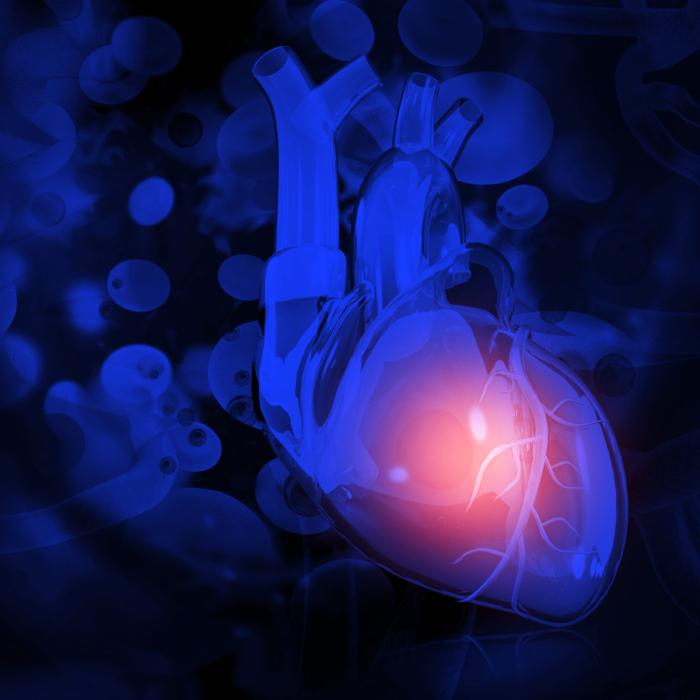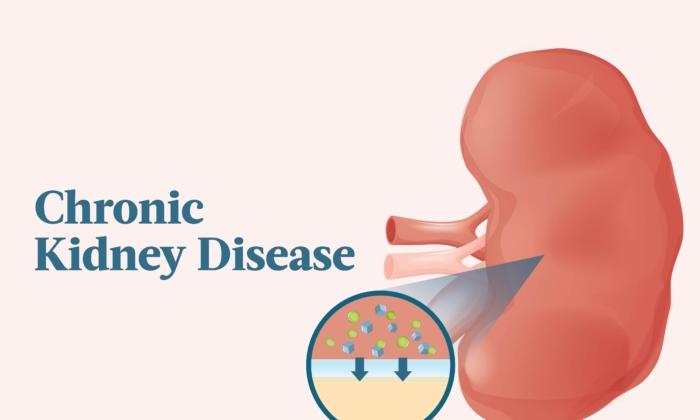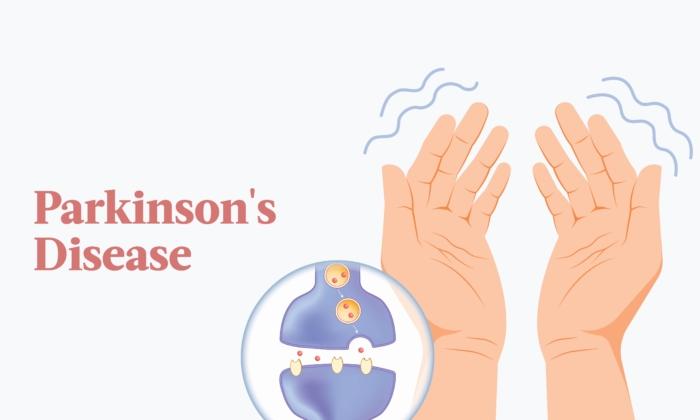What Are the Common Types of Heart Disease?
“Heart disease” is a term used to describe a variety of conditions that affect the heart. These diseases include:- Coronary artery disease (CAD)
- Arrhythmia
- Congenital heart defect
- Heart muscle disease (cardiomyopathy)
- Valvular heart disease
What Are the Causes of Heart Disease?
Coronary Artery Disease
Coronary artery disease (CAD) is the most common type of heart disease in the United States, according to the CDC.
CAD is caused by the buildup of fatty deposits, also called plaques, in the walls of the coronary arteries—a process called atherosclerosis. The coronary arteries surround the heart and are responsible for supplying blood, nutrients, and oxygen to the heart muscle.
Arrhythmia
An arrhythmia is an irregular heartbeat. Arrhythmias arise when the electrical signals that direct heartbeats don’t function properly.
Arrhythmias are usually grouped into two categories.
- Tachycardia: a fast heart rate that is described as a resting heart rate greater than 100 beats per minute.
- Bradycardia: a slow heart rate that is described as a resting heart rate of fewer than 60 beats per minute.
- Supraventricular arrhythmias: occur in the upper heart chambers, or in other cardiac structures.
- Ventricular arrhythmias: occur in the lower heart chambers (ventricles). Ventricular tachycardia is a regular, rapid heartbeat that prevents the ventricles from completely contracting. Ventricular fibrillation is an extremely chaotic, rapid, heart rhythm, and is considered a medical emergency.
Congenital Heart Defect
Congenital heart defects (CHDs) are abnormalities in the heart that present at birth. These anomalies could be present in the heart walls, valves, or blood vessels. In severe cases, blood vessels or heart chambers may be poorly formed, missing, or in the wrong place.While most causes of congenital heart defects are unknown, Mended Hearts reports that 15 to 20 percent of all CHDs are linked to known genetic conditions. Most are caused by a combination of genes and other risk factors including maternal conditions and environmental exposures.
Maternal conditions include elements such as smoking, some infections, and maternal obesity. Environmental aspects include factors such as the mother’s diet, maternal diabetes, and chemicals and medications.
- Atrial septal defect
- Atrioventricular septal defect
- Coarctation of the aorta*
- Double-outlet right ventricle*
- D-transposition of the great arteries*
- Ebstein anomaly*
- Hypoplastic left heart syndrome*
- Interrupted aortic arch*
- Pulmonary atresia*
- Single ventricle*
- Tetralogy of Fallot*
- Total anomalous pulmonary venous return*
- Tricuspid atresia*
- Truncus arteriosus*
- Ventricular septal defect
Heart Muscle Disease (Cardiomyopathy)
Cardiomyopathy is an inherited or acquired disease of the heart muscle that makes it difficult for the heart to pump blood. It is more common in men than women.
- Family history of cardiomyopathy, heart failure, or cardiac arrest
- Coronary heart disease or heart attack
- Endocrine disease, including diabetes and thyroid conditions
- Connective tissue and autoimmune disease
- Infection in the heart muscle
- Muscular dystrophy and other muscle conditions
- Diseases that can damage the heart such as amyloidosis, sarcoidosis, or hemochromatosis
- Long-term use of cocaine abuse or alcoholism
- Pregnancy
- Long-term high blood pressure
- Long-term rapid heart rate
- Dilated cardiomyopathy: a type of disease of the heart muscle that causes the ventricles to thin and stretch, growing larger. It usually starts in the left chamber, the heart’s main pumping chamber, and makes it difficult for the heart to pump blood to the rest of the body. In some cases, a heart transplant is needed.
- Hypertrophic cardiomyopathy (HCM): a disease where the heart muscle becomes thickened. The increase in thickness makes it harder for the heart to pump blood. People with HCM usually have few, if any symptoms, and therefore, the disease often goes undiagnosed. HCM is most often inherited and is the most common form of genetic heart disease.
- Restrictive cardiomyopathy (RCM): a condition of the heart where the muscle tissue in the ventricles become stiff and can’t fill with blood. This disease process leads to reduced blood flow in your heart. RCM tends to affect older adults and can be caused by certain health conditions and treatments such as hemochromatosis, sarcoidosis, and some cancer treatments such as radiation and chemotherapy.
- Arrhythmogenic right ventricular dysplasia: a rare type of cardiomyopathy where the muscle in the right ventricle is replaced by scar tissue that can lead to heart rhythm problems. This type of cardiomyopathy is often caused by genetic changes and is usually more prevalent in men.
Valvular Heart Disease
Valvular heart disease is damage to, or a defect in, one or more of the four heart valves: the mitral, pulmonary, aortic, or tricuspid.These four valves open and close to move blood through your body. The tricuspid and mitral valves regulate the flow of blood between the atria (upper chambers of the heart) and the ventricles (lower chambers of the heart).

What Are the Symptoms of Heart Disease?
Symptoms will differ depending on the type of heart disease.Coronary Artery Disease
Symptoms of coronary artery disease can include:- Chest pain, chest pressure, chest tightness, shortness of breath, and angina.
- Pain in the jaw, throat, neck, upper belly, or back.
- Pain, weakness, numbness, or coldness in the arms or legs.
Arrhythmia
Heart arrhythmia symptoms may include:- Chest discomfort or pain
- Dizziness
- Lightheadedness
- Fluttering in the chest
- Fainting or near fainting
- Shortness of breath
- Racing heart (tachycardia)
- Slow heartbeat (bradycardia)
Congenital Heart Defect
Congenital heart defect symptoms in children could include:- Pale gray or blue skin or lips, also known as cyanosis.
- Swelling around the eyes, belly area, or legs.
- Shortness of breath during feedings in an infant, leading to poor weight gain.
- Swelling in the hands, ankles, or feet.
- Easily tiring during exercise or activity.
- Easily getting short of breath during exercise or activity.
Heart Muscle Disease (Cardiomyopathy)
Symptoms may not be present in the early stages of cardiomyopathy, but as the condition worsens, the following may appear:- Fatigue
- Feeling short of breath during activity or at rest
- Dizziness, lightheadedness, and fainting
- Irregular heartbeats that feel pounding, rapid, or fluttering
- Feeling short of breath when waking up, resting, or trying to sleep
- Swollen legs, ankles, or feet
Valvular Heart Disease
Depending on which valve isn’t working correctly, heart valve disease symptoms typically include:- Chest pain
- Fainting
- Fatigue
- Swollen feet or ankles
- Shortness of breath
- Irregular heartbeat
- Fever or chills
- Heartbeat changes
- Dry or persistent cough
- Skin rashes or unusual spots
- Shortness of breath
- Weakness or fatigue
- Swelling of the legs or belly
What Are the Treatments for Heart Disease?
Treatments may include medicine, surgical procedures, or a combination, and these differ among the types of heart disease.Coronary Artery Disease
Medications
Coronary artery disease generally requires lifestyle changes such as eating healthy, increasing exercise, and not smoking. Sometimes medications are needed. There are numerous drugs available to treat CAD, including:- Cholesterol drugs: These are medications that lower bad cholesterol and reduce plaque buildup in the arteries. These drugs include statins, niacin, fibrates, and bile acid sequestrants.
- Aspirin: Aspirin aids in thinning the blood and prevents blood clots. Daily low-dose aspirin therapy may be recommended for the prevention of heart attack or stroke. Daily use of aspirin can have serious side effects, including bleeding in the stomach and intestines. Don’t start taking daily aspirin without direction from your health care provider.
- Beta blockers: drugs that slow the heart rate and blood pressure. If you’ve had a heart attack, beta blockers may reduce your risk of future attacks.
- Calcium channel blockers: drugs that may be recommended if you can’t take beta blockers or if beta blockers were ineffective for you. Calcium channel blockers can help relieve symptoms of chest pain.
- Angiotensin-converting enzyme (ACE) inhibitors and angiotensin II receptor blockers (ARBs): medicines that lower blood pressure and may help keep coronary artery disease from worsening.
- Nitroglycerin: medication that widens the heart arteries. It can help regulate or relieve chest pain. Nitroglycerin is available as a pill, patch, or spray.
- Ranolazine: medication that may help people with chest pain. It may be prescribed with the use of, or in place of, a beta blocker.
Surgical Procedures
CAD may require surgical intervention, such as angioplasty, stent placement, coronary artery bypass graft (CAGB), or off-pump coronary artery bypass surgery.- Coronary angioplasty and stent placement: This procedure is performed to open clogged heart arteries. It may also be referred to as percutaneous coronary intervention (PCI). A cardiologist guides a catheter to the narrowed part of the heart artery. A tiny balloon is inflated to widen the blocked artery and improve blood flow. A small wire mesh tube, known as a stent, may be placed in the artery during angioplasty. A stent is used to help keep the artery open, and it also lowers the risk of the artery narrowing again. Some stents release medication to help keep the arteries open.
- Coronary artery bypass graft surgery (CABG): During this open-heart procedure, a surgeon takes a healthy blood vessel from another part of the body and creates a new path for blood to flow in the heart. The blood then travels around the blocked or narrowed coronary artery.
Arrhythmia
If your arrhythmia requires treatment, your cardiologist will explain your best options and describe the risks and benefits of each one. Depending on your specific circumstances, choices might include medications, catheter-based procedures, or implanted heart devices such as internal defibrillators and pacemakers.Medications
Two main types of drugs are used to treat heart arrhythmia:- Antiarrhythmics: Examples of antiarrhythmic drugs used to treat arrhythmia include beta blockers like metoprolol succinate, potassium channel blockers such as sotalol and dofetilide, and calcium channel blockers such as verapamil and diltiazem. Amiodarone is used to treat critical or life-threatening ventricular fibrillation or ventricular tachycardia.
- Anticoagulants: Examples of anticoagulant drugs used to treat arrhythmia are warfarin, dabigatran, rivaroxaban, apixaban, and edoxaban.
Surgical Procedures
- Cardiac ablation is the most common procedure for treating arrhythmias. Typically, the ablation is performed by a specialist called a clinical cardiac electrophysiologist. For cardiac ablation, long, flexible tubes called catheters are inserted, starting from the groin and threaded into your heart. These catheters use electrodes to map the heart’s electrical signals. When the problematic source or sources causing the arrhythmia are located, they can be cauterized and eliminated. Cardiac ablation is done under general anesthesia. Generally, patients can go home from the hospital the next day. Most patients with arrhythmia like A-Fib begin treatment with medication before undergoing cardiac ablation.
- A newer treatment modality called left atrial appendage closure is sometimes used as an alternative for atrial fibrillation patients who can’t take blood thinners.
- A pacemaker is a small electronic device that regulates the heart’s rhythm. It’s surgically implanted under the skin near the collarbone. Most pacemakers have two main parts: a pulse generator with a lithium battery and leads (or wires).
Congenital Heart Defect
Although surgery is often not a cure for congenital heart defects, many individuals require an operation(s) and/or medications in adulthood. In fact, according to Mended Hearts, about 25 percent of children born with a congenital heart defect will need heart surgery or other interventions to survive.Medication
Medication is often used if your baby has a particular type of congenital heart defect known as patent ductus arteriosus. Generally, patent ductus arteriosus goes away on its own. However, occasionally medicine is needed to close the patent ductus arteriosus in premature babies.Surgical Procedures
- Cardiac catheterization is a common procedure that is used to repair simple heart defects, such as patent ductus arteriosus and atrial septal defect, if they don’t improve on their own. It might also be used to open heart blood vessels or valves that are too narrow.
- Open heart surgery may be required for a surgeon to work directly on the heart to repair a hole in the heart, patent ductus arteriosus, complex defects, replace valves, or widen blood vessels. Surgeries that are occasionally needed to treat congenital heart defects include: heart transplants, ventricular assist devices, palliative surgery, and total artificial heart implantation.
Heart Muscle Disease (Cardiomyopathy)
Your provider will educate you on the need to change your diet, include daily physical activity, reduce stress, and avoid alcohol and drugs. Treatment options depend on the type and severity of cardiomyopathy with which you have been diagnosed.Medications
These drugs combat irregular heartbeat, congestive heart failure, and high blood pressure that could further damage the heart or cause kidney damage. Examples of the medications used include digoxin, disopyramide, dobutamine, encainide hydrochloride, flecainide, fosinopril, ibutilide, and isoprenaline.Surgical Procedures
Surgical and nonsurgical procedures and devices used to treat cardiomyopathy might include:- Septal ablation: A small portion of the thickened heart muscle is damaged by injecting alcohol through a catheter into the artery, enabling blood to flow through the area.
- Radiofrequency ablation: To treat irregular heart rhythms, a catheter is guided through blood vessels to the heart. Electrodes at the catheter tips transmit energy to damage a small spot of heart tissue that is responsible for the irregular heart rhythm.
- Implantable cardioverter-defibrillator (ICD): A device that monitors the heart’s rhythm and delivers electric shocks when needed to control irregular heart rhythms. ICD doesn’t treat cardiomyopathy; instead, it watches for and controls irregular rhythms, a significant complication of the condition.
- Ventricular assist device (VAD): A device that helps blood flow through the heart. It is usually considered after less-invasive approaches have been found ineffective. It can be used as a short-term or long-term treatment option while waiting for a heart transplant.
- Pacemaker: A small device that is placed under the skin in the chest or abdomen that uses electrical impulses to control arrhythmias.
- Septal myectomy: An open-heart surgery where part of the thickened heart muscle septum that separates the two bottom heart chambers is removed. This procedure improves blood flow through the heart and reduces mitral valve regurgitation. Septal myectomy is used to treat hypertrophic cardiomyopathy.
- Heart transplant: A heart transplant is considered for people with end-stage heart failure when medications and other treatments fail.
Valvular Heart Disease
If a patient has only a mildly diseased heart valve without any symptoms, they generally don’t require treatment. However, they would need routine checkups to monitor the function and disease progression of the valve.Medication
Medication cannot cure heart valve problems, but it is used as a treatment modality. For example, anticoagulants (blood thinners) are used after receiving a prosthetic heart valve. Medication might also be used if a patient’s heart valve disease has led to other health conditions, such as increased blood pressure or heart failure.Surgical Procedures
When a heart valve can no longer perform its job, it may require replacement with an artificial valve. The procedure may have to be performed through open heart surgery. However, there are some instances where artificial heart valves can be implanted using a catheter.- Mechanical prosthetic valves: These are artificial valves that are made out of metal or synthetic material. These mechanical valves last a long time and are generally used in younger people, although they aren’t used as much today as in years past. The disadvantage of mechanical valves is that blood clots may form and block the whole valve, or they could travel through the body in the bloodstream and cause a stroke. To prevent complications, people who have a mechanical prosthetic heart valve will need to take blood-thinning medication (anticoagulants) for the rest of their lives.
- Bioprosthetic (tissue) valves: These are replacement valves that are made out of biological tissue such as the heart tissue of pigs or cows. Those who have a bioprosthetic valve aren’t always required to take anticoagulants to reduce blood clotting. Bioprosthetic valves don’t last as long as mechanical valves and may require another surgery. These heart valves are typically used in people over the age of 60 or in younger people who aren’t able to take long-term blood-thinning medication.
Although mitral valve regurgitation can also be treated with a prosthetic heart valve, the preferred treatment for the defective mitral valve is usually a repair rather than a replacement. This is done using a catheter procedure or through open heart surgery. This type of treatment is known as “heart valve repair.”
Who Is More Likely to Get Heart Disease?
Approximately 47 percent of all Americans have at least 1 of 3 key risk factors for heart disease. Key risk factors include high cholesterol, high blood pressure, and smoking. However, there are several other medical conditions, factors, and lifestyle choices that can place people at greater risk for developing heart disease. Those conditions include:- Age
- Family history
- Overweight and obesity
- Diabetes
- Excessive alcohol use
- Physical inactivity
- Unhealthy diet
What Are the Tests to Detect Heart Disease?
There are many different tests used to diagnose heart disease. Aside from chest X-rays and blood tests, the following studies may be used to diagnose heart disease:- Electrocardiogram (ECG or EKG): a quick and painless test that records the electrical signals in the heart. It will tell you if the heart is beating too fast or too slowly.
- Holter monitoring: a device that’s worn for a day or more to record the heart’s activity during daily activities. This test can detect irregular heartbeats that aren’t found during a regular ECG exam.
- Echocardiogram: a noninvasive exam that uses sound waves to create detailed images of the heart in motion. It illustrates how blood moves through the heart and heart valves. An echocardiogram can help determine if a valve is leaking or narrowed.
- Exercise tests or stress tests: tests that often involve walking on a treadmill or riding a stationary bike while the heart is monitored. These tests help uncover how the heart responds to physical activity and whether heart disease symptoms arise during exercise. If you aren’t able to exercise, you may be given medications.
- Cardiac catheterization: a test that can show blockages in the heart arteries. A long, thin flexible tube (catheter) is inserted in a blood vessel, generally in the groin or wrist, and guided up to the heart. Dye flows through the catheter and travels to the arteries in the heart. The dye helps the arteries show up more clearly on images taken during the test.
- Heart (cardiac) CT scan: an X-ray tube that rotates around your body and collects images of your heart and chest.
- Heart (cardiac) magnetic resonance imaging (MRI) scan: a test that uses a magnetic field and computer-generated radio waves to create detailed images of the heart.
How Does Your Mentality Affect Heart Disease?
Psychological factors are believed to play a significant role in the appearance and outcome of cardiac illness. Social and psychological factors and personality traits and characteristics are important factors that influence the morbidity of cardiovascular diseases (CVDs), according to an article published in Indian Heart Journal.- Poor emotional state
- Anger
- Hostility
- Anxiety
- Negativity
What Are the Natural Remedies for Heart Disease?
Several natural remedies can help you minimize and better manage your risks of developing heart disease. While natural resources are helpful, it’s important to check with your doctor before incorporating them.- Coenzyme Q10 (CoQ10): a substance similar to a vitamin that is found in every cell of your body. Coenzymes aid enzymes in protecting the heart and skeletal muscles. In patients with congestive heart failure, CoQ10 supplements help to improve heart functions. They might also be able to reduce cardiovascular death, according to the JACC study.
- Iron: Findings from a study found that approximately 10 percent of new coronary heart diseases occurring within a decade of middle age could be avoided by preventing iron deficiency. Previous studies suggest that in patients with cardiovascular disease, iron deficiency was associated with worse outcomes.
- Red yeast rice: People take red yeast rice as an oral supplement for high cholesterol and heart disease. Research shows that red yeast rice containing monacolin K can lower your triglyceride level, total blood cholesterol level, and your low-density lipoprotein level.
- Omega-3s from fish oil: These have been suggested by the American Heart Association (AHA) for the past 20 years to reduce cardiovascular events like stroke or heart attack in people who have been diagnosed with cardiovascular disease.
- Mind-body therapies (MBTs): Yoga, massage, tai chi, acupuncture, and other MBTs have been proven helpful to heart disease including CHD.
How Can I Prevent Heart Disease?
Schedule routine health screenings. High cholesterol and high blood pressure can damage the blood vessels and heart. If you don’t test for them, you won’t know if you have been afflicted by these conditions, or when additional medical attention is needed.- Don’t smoke or use tobacco or smokeless tobacco: Chemicals in tobacco may damage blood vessels and the heart. Cigarette smoke decreases the oxygen in the blood, which increases heart rate and blood pressure because the heart has to work harder to supply enough oxygen to the brain and body. The risk of heart disease begins to drop as early as one day after quitting.
- Get regular daily exercise: Daily physical activity of 30 to 60 minutes helps control your weight and reduce the chance of developing other conditions such as diabetes, high blood pressure, and high cholesterol that may strain the heart.
- Eat a healthy diet: A heart-healthy diet can improve cholesterol and blood pressure and reduce the risk of Type 2 diabetes. You should limit the consumption of salt, processed carbohydrates, alcohol, sugar, and saturated fats.
- Maintain a healthy weight: Being overweight increases the risk of heart disease. Excess weight, especially around the stomach, increases the chances of developing high blood pressure, high cholesterol, Type 2 diabetes, and heart disease.
- Get plenty of sleep: Most adults require a minimum of seven hours of sleep. Those who don’t get enough sleep are at a higher risk of developing high blood pressure, obesity, diabetes, depression, and heart attack. Set a sleep schedule by going to bed and waking up at the same time each day, and stick to it.
- Manage your stress: Unhealthy management of stress such as drinking, smoking, or overheating can increase your risk of heart disease. Find alternative methods of stress management like meditation, physical activity, and relaxation exercises.
- Take nutritional supplements: Your body relies on nourishment to sustain your health. As you age, levels of essential nutrients necessary for protecting against disease decrease. To restore their levels and stabilize cardiovascular health, it’s best to optimize nutrient levels.







